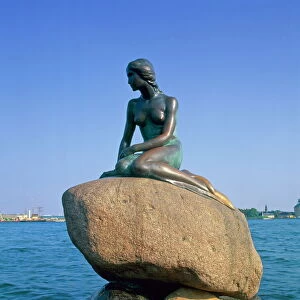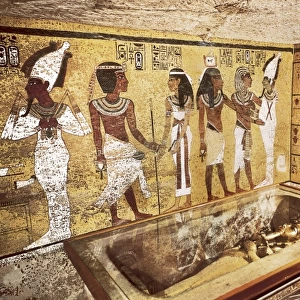Home > Europe > Denmark > Copenhagen
Canopic jar. Tomb 57 of Iunefer. Hawara Cemetery. Egypt. C
![]()

Wall Art and Photo Gifts from Mary Evans Picture Library
Canopic jar. Tomb 57 of Iunefer. Hawara Cemetery. Egypt. C
Canopic jar to contain the entrails of a deceased. Tomb of Iunefer, number 57. Hawara Cemetery. Egypt. Limestone. 12th Dynasty. Middle Kingdom. Reign of Amenemhat III. C. 1831-1786 BC. Ny Carlsberg Glyptotek Museum. Copenhagen. Denmark
Mary Evans Picture Library makes available wonderful images created for people to enjoy over the centuries
Media ID 14326043
© Thaliastock / Mary Evans
12th 1786 1831 Area Burial Canopic Carlsberg Cemetery Copenhagen Deceased Dynasty Egyptians Entrails False Four Funerary Glyptotek Goddess Horus Inscription Limestone Sons Amenemhat Duamutef Hawara Neith
FEATURES IN THESE COLLECTIONS
> Africa
> Egypt
> Related Images
> Europe
> Denmark
> Copenhagen
> Historic
> Egyptian pyramids and tombs
EDITORS COMMENTS
1. Title: "Canopic Jar from the Tomb of Iunefer, Hawara Cemetery, Egypt: A Symbol of Ancient Egyptian Funerary Art and Religion" This Canopic jar, originating from the Tomb 57 of Iunefer in the Hawara Cemetery of Egypt, dates back to the 12th Dynasty, specifically the Middle Kingdom period during the reign of Amenemhat III around 1831-1786 BC. The jar, now housed in the Ny Carlsberg Glyptotek Museum in Copenhagen, Denmark, is a remarkable example of ancient Egyptian art and the intricate funerary practices of the time. Canopic jars were essential components of ancient Egyptian burials, designed to contain the entrails of the deceased. This particular jar is adorned with the heads of the Four Sons of Horus: Imsety, Duamutef, Hapi, and Qebehsenuef, each representing a specific organ and protecting it from decay and harm. The jar's exterior is carved from limestone, and the intricate inscriptions and designs reflect the deep reverence for the gods and the deceased in ancient Egyptian culture. The false beard and the serene expression on Iunefer's face, depicted on the jar's lid, represent the transformation of the deceased into the god Osiris. The interior of the jar is equally intricate, with the goddess Neith protecting the entrails. The jar's design is a testament to the ancient Egyptians' belief in the afterlife and their elaborate burial practices. The Canopic jar from the Tomb of Iunefer is a significant artifact that provides valuable insights into the ancient Egyptian culture, religion, and their beliefs about the afterlife. It is a must-see for anyone interested in ancient civilizations, art history, and the mysteries of the past.
MADE IN THE USA
Safe Shipping with 30 Day Money Back Guarantee
FREE PERSONALISATION*
We are proud to offer a range of customisation features including Personalised Captions, Color Filters and Picture Zoom Tools
SECURE PAYMENTS
We happily accept a wide range of payment options so you can pay for the things you need in the way that is most convenient for you
* Options may vary by product and licensing agreement. Zoomed Pictures can be adjusted in the Cart.
















